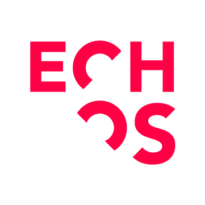Created by Google, a Design Sprint is a five-day process that uses Design Thinking to create a new product, service or feature. Design sprints are the perfect solution to get ideas out of the paper and test them in a timely fashion always, focusing on the final user.
Tip 1: The basis of your Design Sprint should always be a good challenge.
Identify the hypothesis you wish to test. Firstly, try and decide what the big question or challenge you want to answer – think about the item that when answered, will allow you to progress the most.
After deciding on your big question, proceed to brainstorm and write down all the solutions that come up during the process. After that, select the three best ideas and proceed to prototype. Creating different types of prototypes in one session is a great way to evaluate the desire for various facets of the same product.
When prototyping, try to limit the number of variables that you will include in your prototype; this way, you can get more specific comments and feedback about individual features. If you’re prototyping a digital experience, for example, start by creating individual pages of a website, instead of the whole website.
Tip 2: Work on people saying what they really mean.
When getting feedback on a prototype, it’s essential to get users to tell you their real-life feelings rather than hypothetical ones. When creating a product, a service or a feature, the final objective is customer desirability, but sometimes what people say and what they mean is not the same thing.
Create an experience that makes their decisions feel real. For example, your team could create fae money and give some of it to each user and ask them in which product presented to them would they ost like to invest their “money”.
Tip 3: Concentrate your resources.
Start small by projecting the complete experience of the simplest version of your product – evidently always making sure that your user needs are still being solved. Don’t use all your resources just yet.
Get feedback on the simplest version of your product and, after that, allow yourself to use some more resources. As the sprint goes on, and you get feedback, you can increase the number of resources you allocate to the next phase. The idea is to use as little money as possible in the beginning, so that you have most of your money to invest in the most robust prototype of your product as you approach the end.
Tip 4: Let go of your ideas. Don’t overbuild, build only enough to learn.
Choose the format that best expresses your idea. Give most of your time for the prototyping of key features to your product or service. For digital prototypes, it is impossible to build the entire thing in a week, so focus on creating the pages or screens that will be mostly used within your product.
There is no problem in having a combination of digital and paper prototypes. The mix of the two, in fact, can help the process and unleash peopleé creativity.
Tip 5: Keep the energy up.
We suggest you allow your team to have short breaks every so often during the Design Sprint. Prototyping can be a very intense process, and rest is as important as creative energy because it allows it to exist.
Change it up a little, maybe take your team to work from a cafe one day. Exploring new environments can be inspirational. Taking a road trip is also a great idea to pick up the energy; perhaps you can go and speak with people from somewhere else to get a new perspective on your product.
The best antidote for tiredness is fun.
Tip 6: Let us help you learn more.
You can learn more about Design Sprints in the below video, where our Design Thinkers walk you through the sprint Echos’ did for the Google News Initiative Design Accelerator.
If you’re interested in bringing Design Sprints to your company, get in touch or visit our website.
—
Follow us on social
Instagram – Facebook – LinkedIn – Youtube – Spotify
How Can We Help?
- For training and Innovation Journeys in your company: check out our in-house course offering.
- For upcoming courses in your region: visit our website.
- For upcoming events in your region: look at our event calendar.
- If you have a special project and would like to use Echos’ consultancy services: send us an email.
- Want to speak to a real person? Call us on 1300 502 006


